Palm trees, members of the Arecaceae family, are a hallmark of tropical and subtropical environments. These trees, which exhibit a self cleaning mechanism, come in various sizes and shapes, but they all share similar physical features, including their palm leaves, also known as palm fronds.
A palm frond is simply the leaf of a palm tree. You can describe palm fronds as foliage that emerges from the top of a palm tree. These fronds can come in diverse shapes, ranging from large feather fronds to expansive fans, and they give palm trees their iconic lush and tropical appearance.
Palm fronds usually stay green year-round, but when they age or undergo stress, they may turn brown. Some can last for up to five years or longer. These fronds perform photosynthesis, which is vital in providing nourishment for the tree’s survival. They also play a crucial role in regulating the tree’s inner temperature.
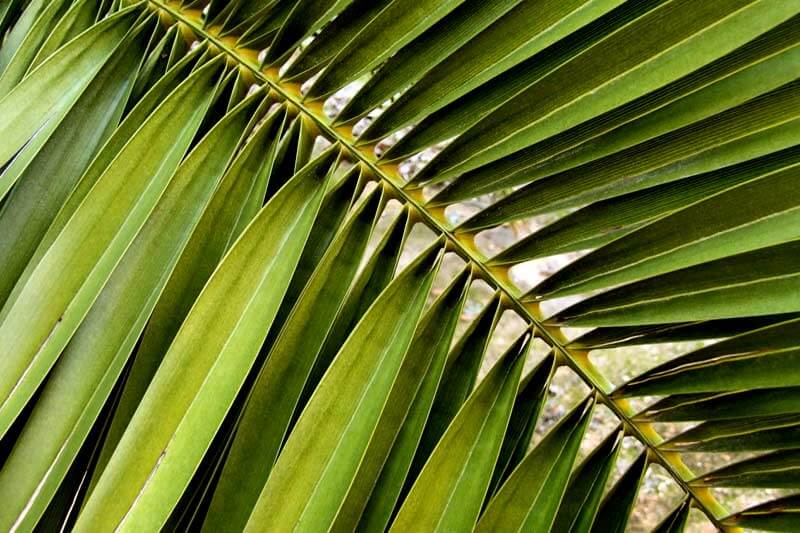
The palm frond can be divided into various parts as follows:
- Petiole (leaf stalk): The leaf stalk is what connects the palm fronds to the main stem (tree trunk).
- Rachis: The rachis is part of the petiole that bears leaves at short intervals. It extends from the end of the petiole up to the tip of the fronds.
- Palm leaflets: Leaflets are parts of the fronds that attach to the rachis. They are V-shaped in cross-section. The apex of the V has a midvein. Palm fronds with inverted V shape leaflets are known as reduplicate while those with upright V-shaped leaflets are referred to as induplicate.
- Frond midrib (leaf sheath): This is the base of the palm frond (end of the leaf stalk), where the fronds attach to the main stem.
- Cabbage: This is the folded-up palm tree fronds. In some smaller palm species, cabbage is an edible part.
- Palm spines: These are prickles or thorns along the petiole.
Types of palm fronds
There are four basic characteristic forms of palm leaves: pinnate, palmate, bipinnate, and entire. The most common are Pinnate and Palmate, but the two others also appear in the palm family, although rarely.
Pinnate leaves
They are often known as “feather palms”, and are the most common in the palm family. Pinnate fronds are divided into leaflets and are attached to a single leaf axis, similar to a feather. Pinnate fronds vary widely in size. They can be as small as 1 foot and as long as 75 feet
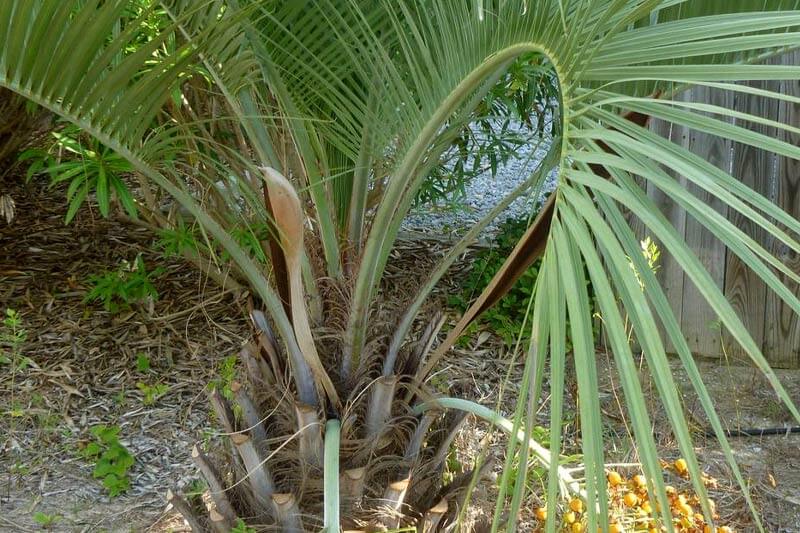
Palmate leaves
They belong to the trees commonly known as fan palms, characterized by their fan fronds. Palmate fronds have extended leaf parts that are circular or semicircular.
The leaf parts are divided into segments and radiate from where they are attached to the petiole (the stalk that attaches the leaf to the stem). In terms of size palmate leaves vary in size. It can be as small as the size of your palm and as large as 5 meters in width.
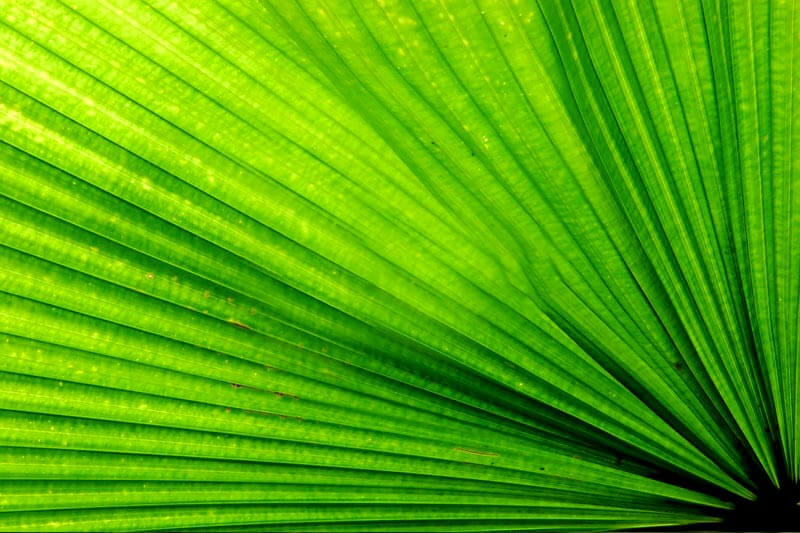
Bipinnate leaves
This is a class of rare palm frond types. The leaf structure is similar to that of the feather palm, but in this case, they are divided in two. The leaves resemble a fishtail, and each of the fronds can be as long as 4 meters and as wide as 3 meters.
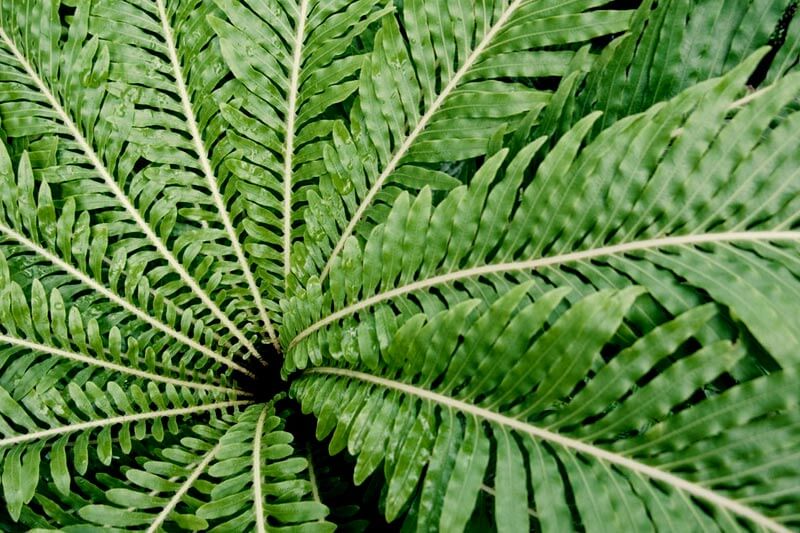
Entire leaves
This is another rare class of entire fronds in the palm family. They have a basic leaf structure that is similar to pinnate leaves, although simple and undivided, and this makes them unique.
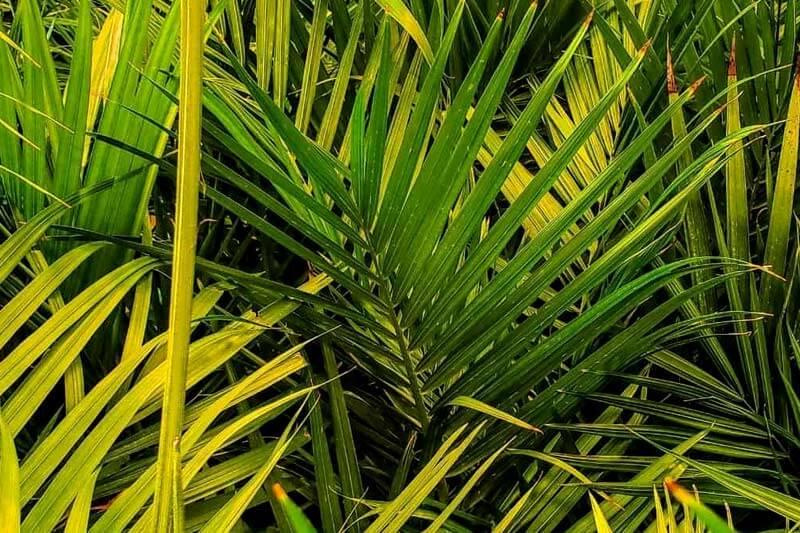
What can palm fronds be used for?
From its decorative features to the feathery and slow decomposition features of the palm frond, it is suitable for many agricultural, construction, and decorative uses. Some of the uses of palm fronds are:
Palm thatch roofs
Palm thatch roofs are most useful from the beginning to the bitter end of their life. They are made by tying the fronds around a timber frame. The roofs can be useful for things like compost bins, chicken coops, garden sheds, and even huts that can serve as homes.
Filling swales paths
Frond has a slow decomposition process compared to most leaves, it is thus used to fill swale paths with organic material. They’ll help with creating plenty of space for water, but they’ll also be long-standing enough to provide cover over the materials—nutshells, gravel, leaves, and sand.
Garden fencing
Fronds can be tied horizontally to create a nearly impermeable wall for plants, birds, and other animals. The thicker parts of the spines of the fronds could be substituted for posts in a more temporary structure.
Windbreaks
A palm frond garden fence can also work as a windbreak for young or low-lying plants and bushes.
Woven crafts
Locally made baskets, hats, furniture, and other materials can be made out of the palm frond. If you’re lucky to visit local areas where all these crafts are made, you’ll get to cherish the work of art.
Garden stakes
The palm spines can be put to good use by using them as garden stakes for climbing plants such as bean, cucumber, and tomato plants. Once the frond spines have lost their vigor, they can be tossed into the garden or beneath a tree to serve as compost.
Fuel for fire
Another way to utilize the spine of the frond is by using it as firewood.
Spiritual uses
According to the bible, the palm frond is used to symbolize victory, triumph, peace, and eternal life. It is often used on Palm Sundays as a sign of celebration of the resurrection of Jesus.
Palm frond decorations
Palm fronds can be used in different creative ways to add decorative touches to your home, and garden, and during events. Several different decorative items can be made from wet or dried palm leaves alike. Bridal bouquets, ceremonial arcs, and wall crafts are some of the decorative ways to use palm fronds.
Lorem ipsum dolor sit amet, consectetur adipiscing elit. Ut elit tellus, luctus nec ullamcorper mattis, pulvinar dapibus leo.



